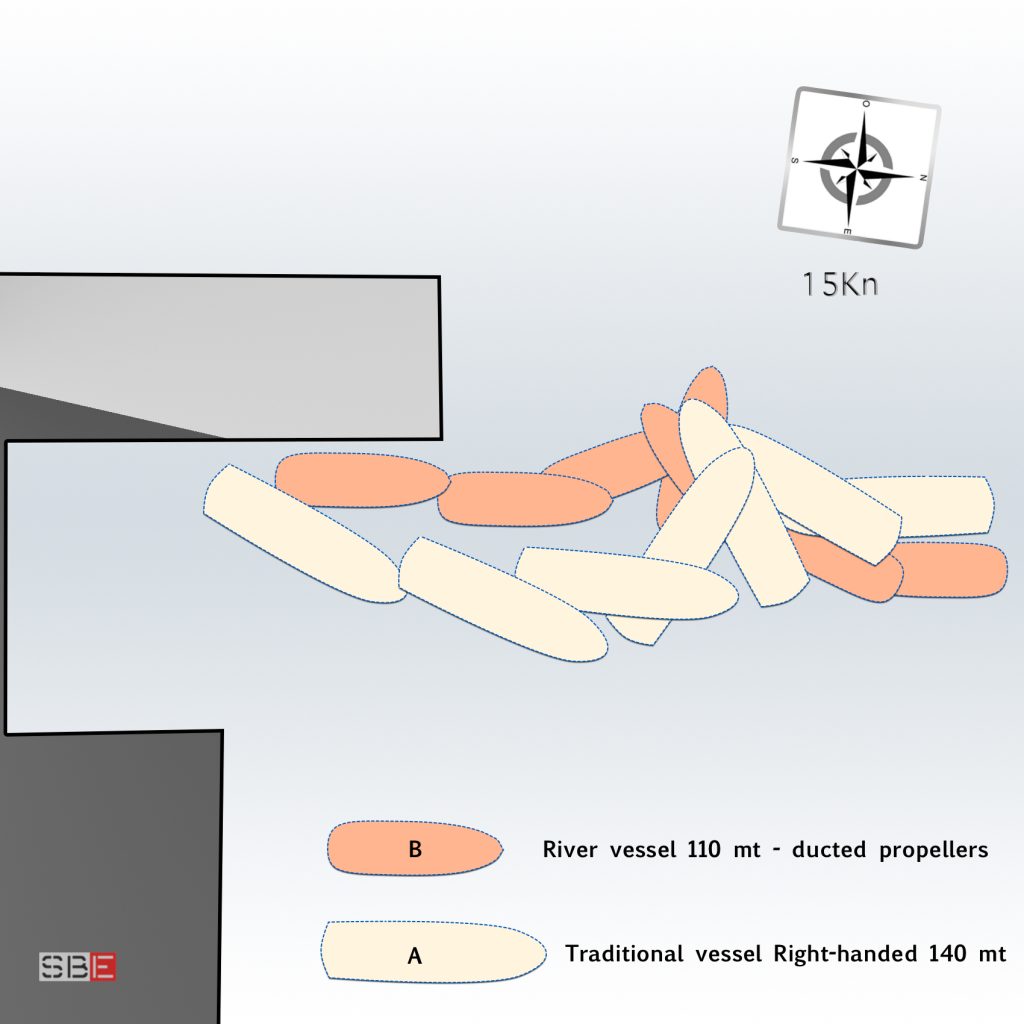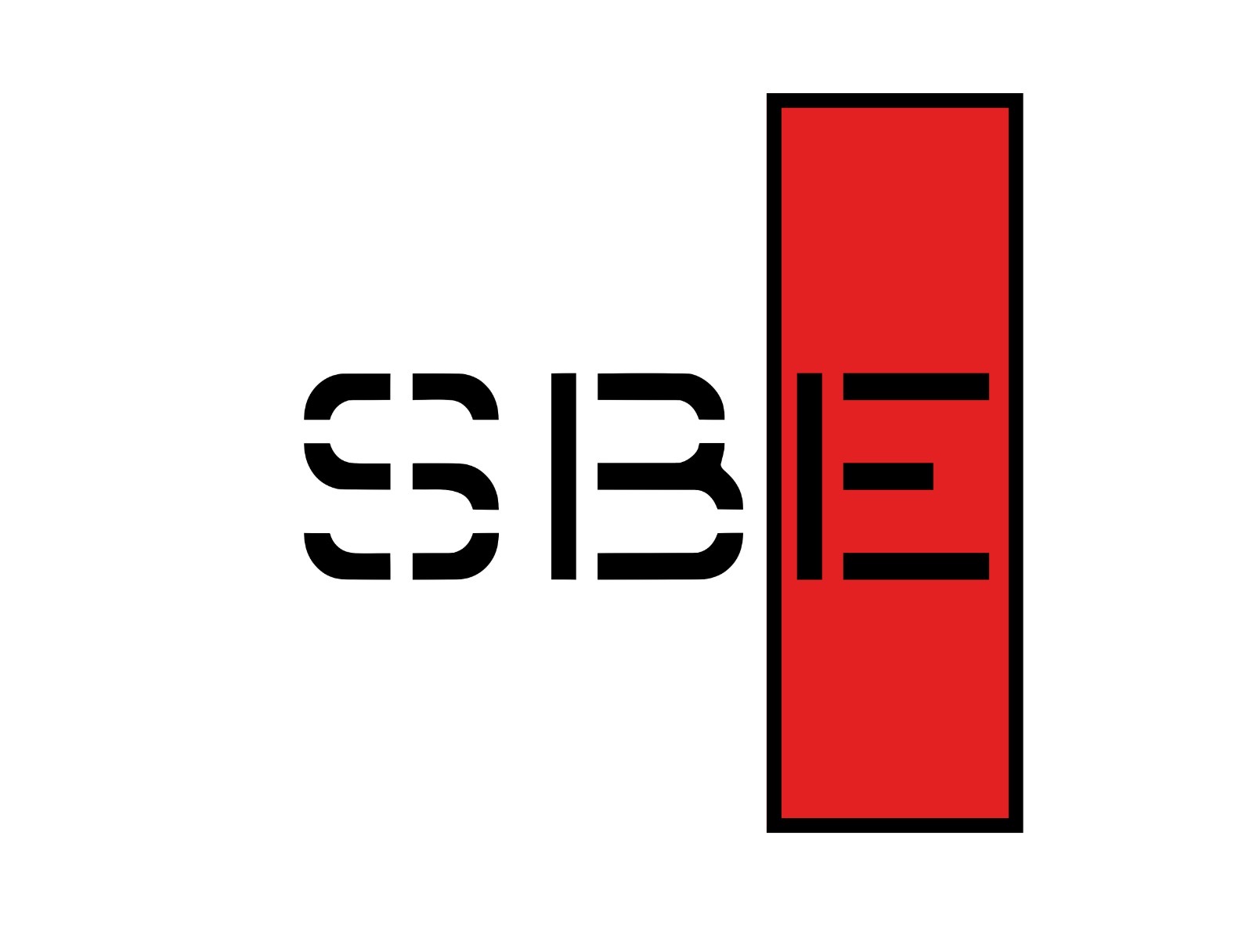The old Azimuth Systems in Manoeuvre Copy
Let’s stop for a moment.
EcoPeller
Azimuth propeller with Schottle patent, the EcoPellers guarantee better course stability than the previous ones and lower consumption thanks to their shape and the absence of the duct. As the name suggests, this propeller winks at the owner attentive to emissions, relying on a vertically mounted electric motor, eliminating shaft lines and gears and reducing polluting emissions into the atmosphere.
You can find more information here: EcoPeller.

We must turn 180° to proceed back to the mooring position in the presence of a wind of 15 knots from the North West.
- A – Traditional single-prop ship with variable pitch left-handed (right-handed effect), Bow thruster 800 Kw, length 140 meters, 5 meters max draft. (See figure above)
- B – River vessel double azimuth synchronised fixed pitch-propellers ducted – maximum angle 60°, Bow thruster of 600 Kw, length 110 meters, 4.5 meters max draft. (See figure above)
Manoeuvring Vessel A
We approach slowly, slightly upwind compared to where we decide to turn. If the approaching velocity allows, we ‘invite’ the bow to the starboard to start the swinging. On the contrary, if we want to decrease the speed before turning, we use the engine Slow Astern about one hull distance from the turning point. We exploit the propeller “Paddle-wheel effect” for turning in both cases. We complete the rotation using the bow thruster and the engine alternately astern and ahead with appropriate rudder angles. We slowly move back towards the mooring, compensating the propeller effect with the power of the BT.
Manoeuvring Vessel B
We slowly approach the turning point. We are not conditioned by the “Paddle-wheel effect” in choosing which side to turn. According to the weather condition, we decide to turn to starboard to present the “head to the wind”, taking advantage of it in the middle of the turning. The ducted, albeit not independent propellers, offer us the opportunity to stop the ship while staying on course. To find ourselves in the proper position at the end of the turn, we decide to go upwind and break the residual speed. Keeping the engine astern and the rudder-propellers hard a port, we give the first invitation to the stern. We complete the turning with the help of the bow thruster and with appropriate engine kicks and propeller-rudder hard over to port and starboard alternately. Finally, we use the propellers as a tractor to proceed backwards, directing them and keeping the bow steady with the bow thruster.
In both cases, the influence of the wind, with its direction and intensity, allows us to manage the manoeuvre without using the tug or anchor—still, only the bow thruster to maintain steering. We would have made other assessments with a loaded ship and a more heavy draft or different wind conditions.
Considerations
This example focuses on the first significant difference between a classical and well known propeller-rudder system and unsophisticated and straightforward azimuths.
The manoeuvre of ship A uses the effect of the propeller, which forces us to choose the turning side. Going backwards is not easy and depends on external conditions, on the “strongness” of the propeller effect and bow thruster power, which assists us in maintaining the position of the bow. We always remember “the stern search for the wind“, especially backward. These forces force us to approach the quay at a certain angle.
The manoeuvre of ship B does not oblige us to choose the side on which to turn. Since the propellers are not independent but adjustable up to a maximum angle of 60 °, the turning is less compact and the “swept path” more elongated. Elongation typically happens because the stern needs to be pushed and pulled. However, the ability to direct it and keep it in the desired direction is superior. We can approach the quay almost parallel.
The latter is a simple system because the propellers are fixed pitch, not independently orientable and cannot exceed an angle greater than 60 degrees—ships equipped with this propulsion system are still in service but now belong to another era. Today we have vessels with much more sophisticated and manoeuvrable azimuth systems, as we will see shortly.
